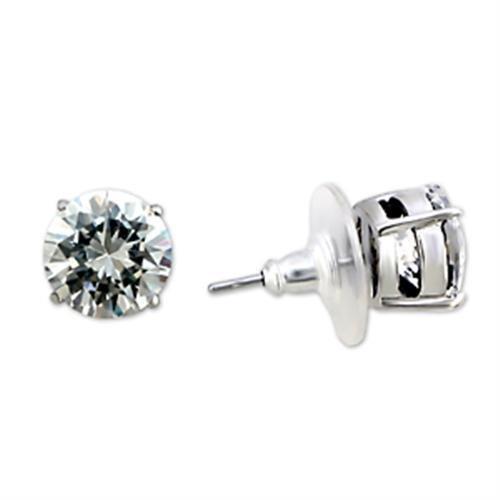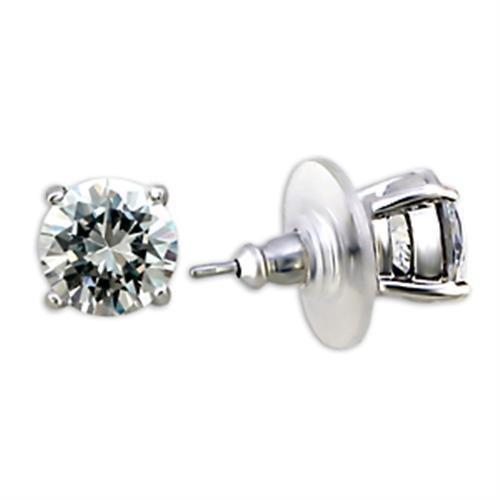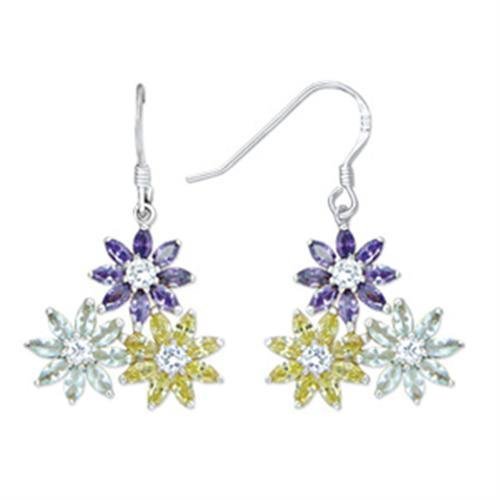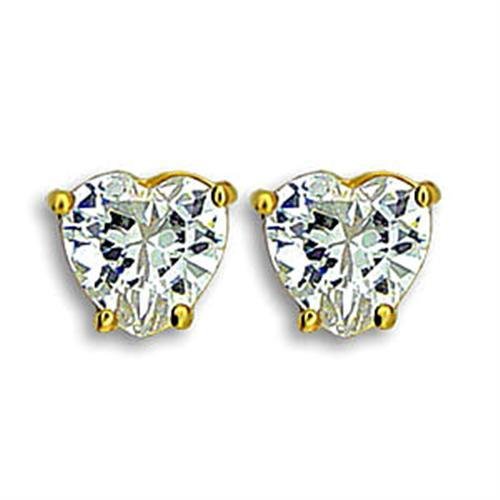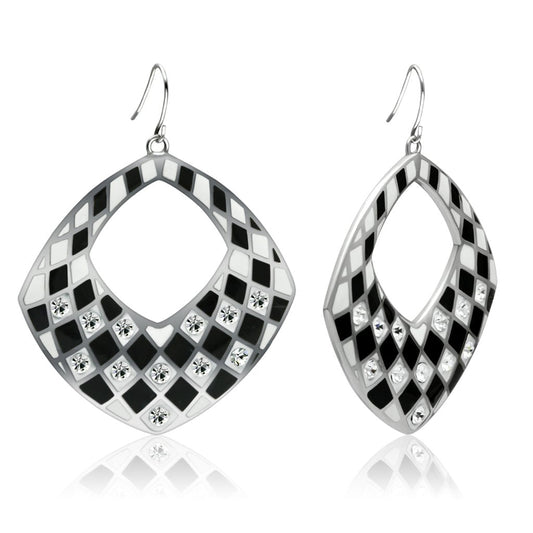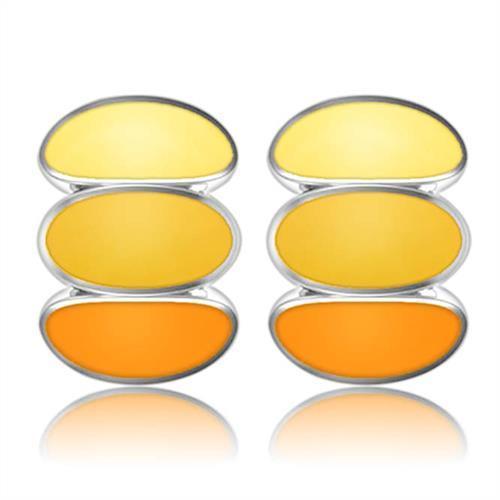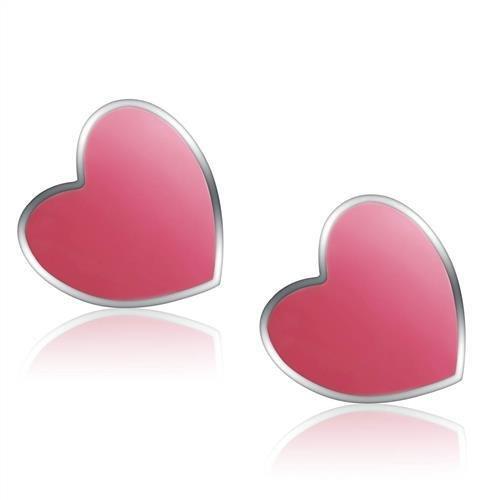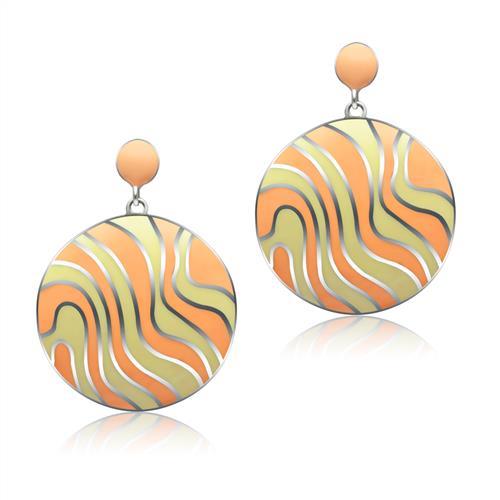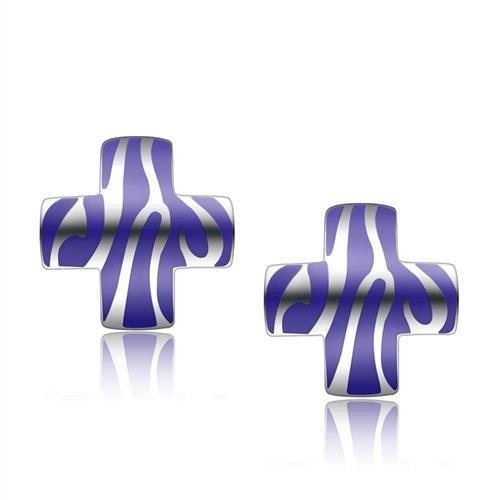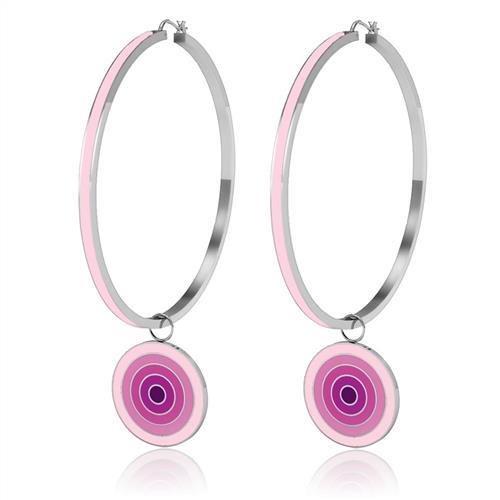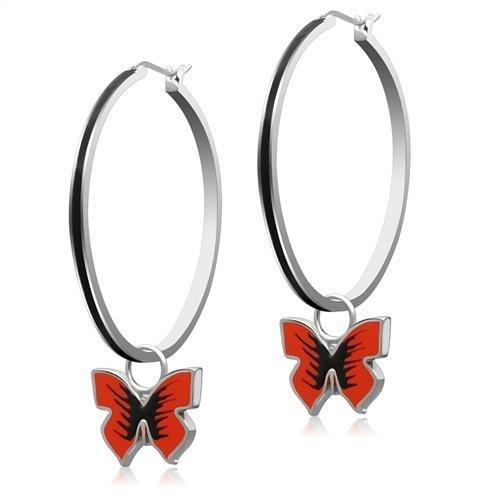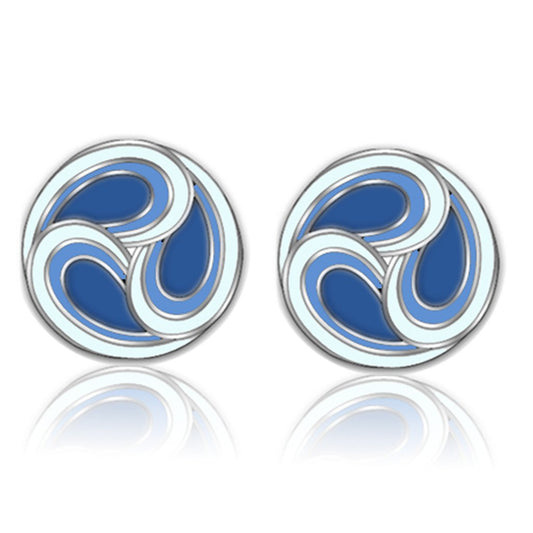That frustrating red, itchy rash you get from your favorite necklace? You're not alone. It’s the top reason people give up on wearing accessories they love, forcing them to choose between looking good and feeling good. But it doesn't have to be a trade-off.
The real culprit behind most skin reactions isn't the jewelry itself, but one specific metal lurking inside: nickel. The good news is that avoiding it is easier than you think. The key is to choose pieces made from high-quality, hypoallergenic materials like platinum, titanium, and surgical-grade stainless steel.
Finding Jewelry That Won’t Irritate Your Skin
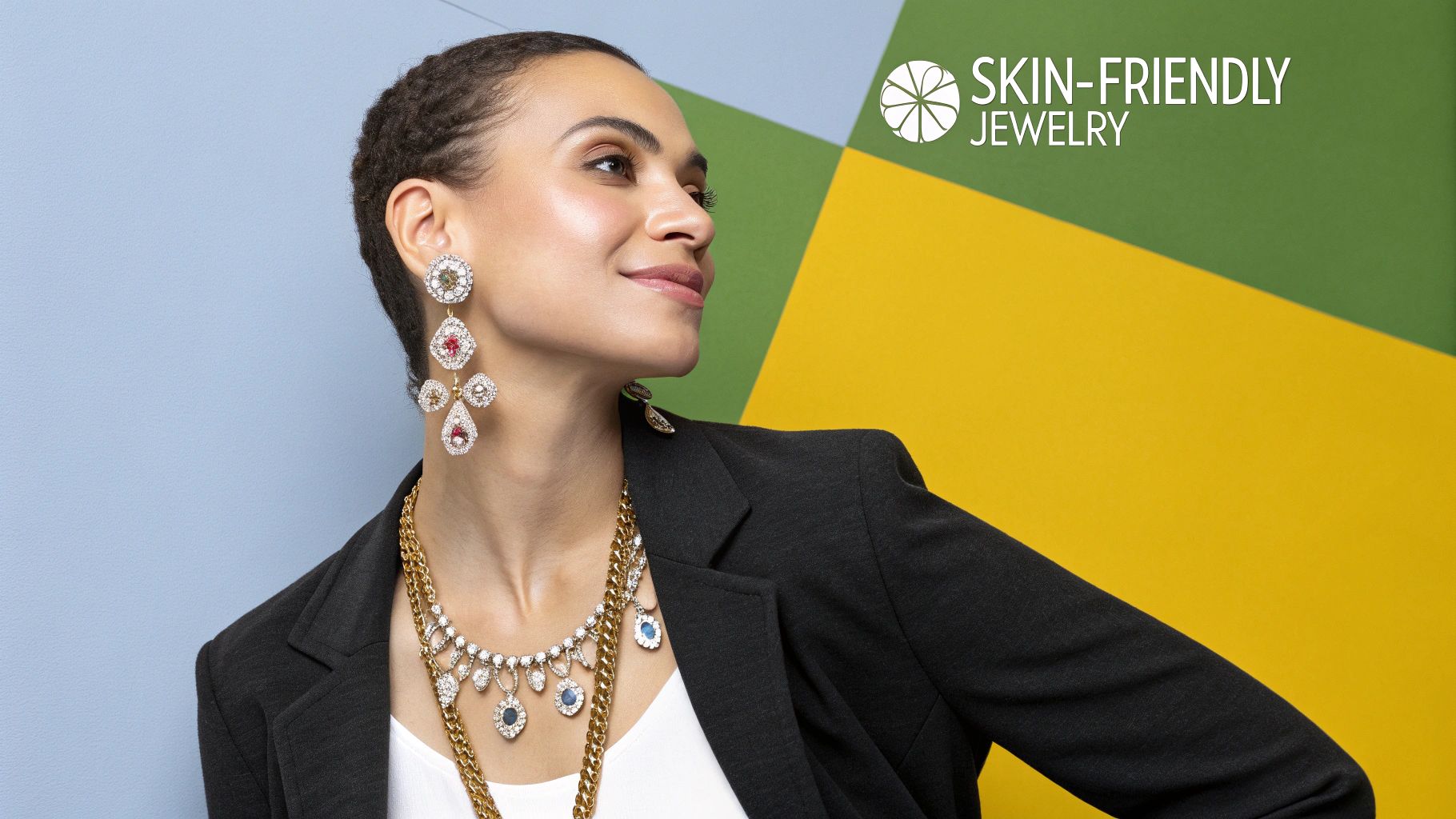
If you’ve ever dealt with redness, itching, or even that dreaded green tint on your skin after wearing certain accessories, welcome to the club. It's an incredibly common problem, but one with a simple solution. It all comes down to knowing which metals are your friends and which are your foes.
Think of this as your guide to building a jewelry collection you can wear with total confidence. We’ll demystify why some metals cause flare-ups and introduce you to the best skin-friendly alternatives out there. Our goal is to give you practical, real-world advice so you can finally find beautiful pieces without sacrificing comfort.
Why Material Choice Is Everything
The secret to irritation-free accessorizing is surprisingly simple: it’s all about the metal. So much of the mass-produced jewelry on the market contains nickel, a widespread allergen that’s responsible for the vast majority of skin sensitivities. When you sweat, tiny amounts of nickel can leach out of the jewelry and onto your skin, triggering an immune response.
This is exactly why choosing high-quality, hypoallergenic jewelry is non-negotiable for sensitive skin. Brands like Precious Pulse Jewelry are dedicated to creating stylish, skin-friendly pieces by focusing on superior materials from the start.
Platinum, for example, is a naturally hypoallergenic metal, making it an excellent choice. While the global jewelry market hit an estimated USD 327.28 billion in 2024, the demand for safe alternatives to nickel alloys remains steady. After all, those alloys can cause contact dermatitis in up to 17% of the population. You can learn more about these global jewelry market trends.
By learning to spot these safe-haven metals, you can confidently pick pieces that feel just as amazing as they look. It’s time to build a collection that brings you joy, not irritation.
Understanding Why Some Jewelry Causes Reactions
Ever wonder why that brand-new necklace leaves an itchy rash behind? Or why a pair of earrings suddenly makes your lobes red and sore? It’s an incredibly common experience, and the answer usually lies in a hidden ingredient lurking in the metal itself. Think of it as a case of mistaken identity, where your immune system sounds a false alarm.
To get why this happens, it helps to have a quick refresher on understanding what an allergy is. In short, your body’s defense system mistakes a harmless substance for a dangerous invader. When it comes to jewelry, tiny metal particles can dissolve in your sweat and seep into your skin, which is what triggers that defensive overreaction.
This leads to a condition called contact dermatitis—the technical term for the redness, itching, and inflammation you see. It’s not a flaw in your skin; it’s just an overactive immune response to a very specific trigger.
The Main Culprit: Nickel
The most frequent offender in the world of jewelry is, without a doubt, nickel. This metal is cheap, strong, and adds a brilliant shine, making it a go-to for alloys used in fast-fashion and costume jewelry. The problem? It's also the single most common metal allergen, affecting up to 20% of the population.
When you wear a piece containing nickel, especially in humid conditions or while exercising, the metal ions leach out at a faster rate. Your immune system spots these foreign invaders and launches an attack, resulting in that uncomfortable, tell-tale rash. This is exactly why a piece you wore without issue in the winter might suddenly cause problems on a hot summer day.
You can learn more about this common issue and how to avoid it in our detailed guide on what is nickel-free jewelry.
The core issue is that your immune system doesn't differentiate between a dangerous pathogen and a harmless metal ion. To your body, an invader is an invader, and it will deploy an inflammatory response to protect you—even when the "threat" is just a stylish accessory.
While nickel is enemy number one, other metals can cause trouble for certain individuals. Cobalt and copper are two other potential irritants often found in lower-quality alloys. Even some gold or silver pieces can be problematic if they aren’t pure enough. For instance, many white gold items are alloyed with nickel to get their silvery color, and some sterling silver can contain trace amounts of it.
The following chart breaks down the irritation rates for the most common metal allergens found in jewelry.
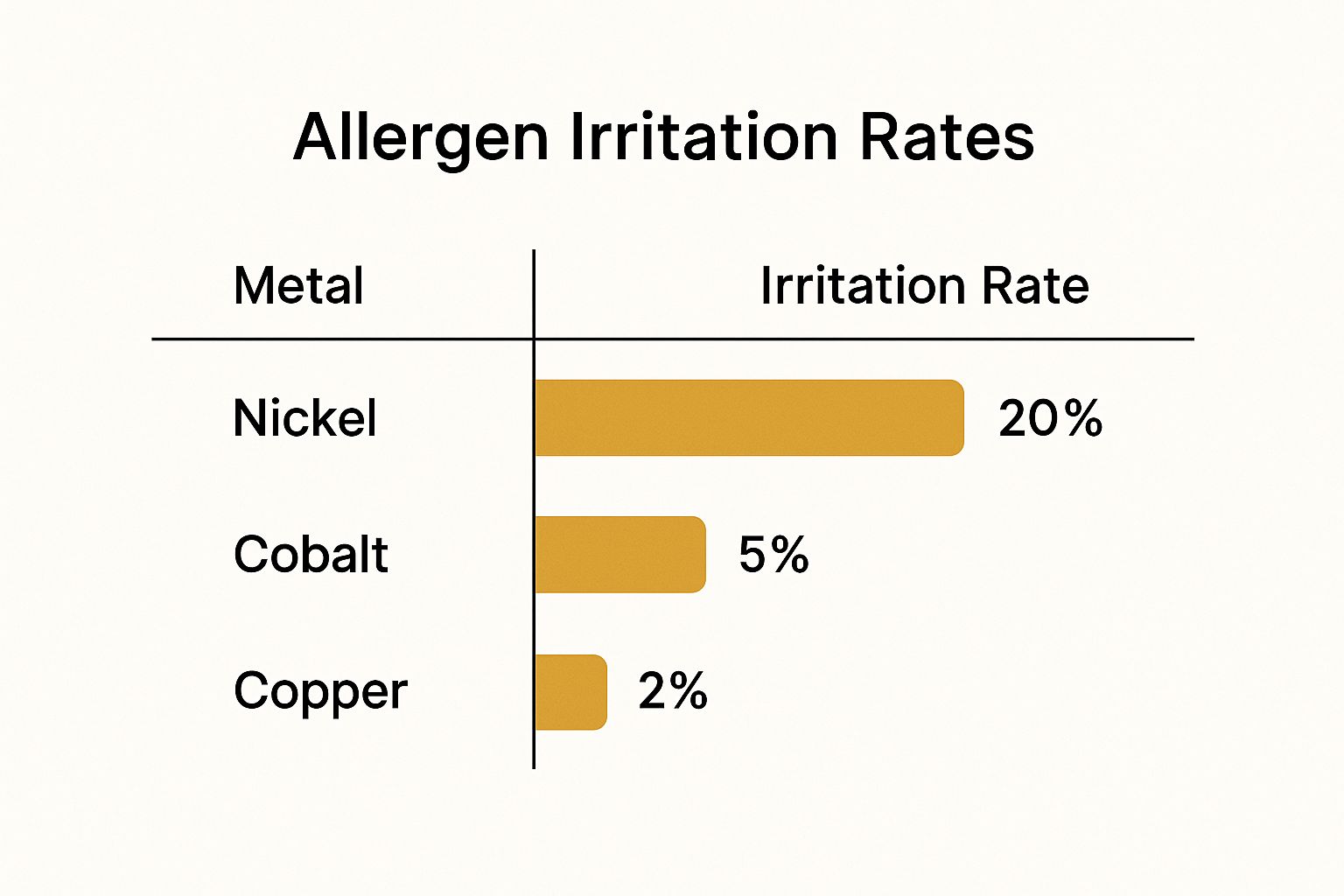
As the data clearly shows, nickel is by far the biggest trigger for skin reactions. Knowing this empowers you to become a smarter, more confident shopper, fully equipped to choose beautiful pieces that are actually safe for your sensitive skin.
Choosing The Best Metals For Sensitive Skin
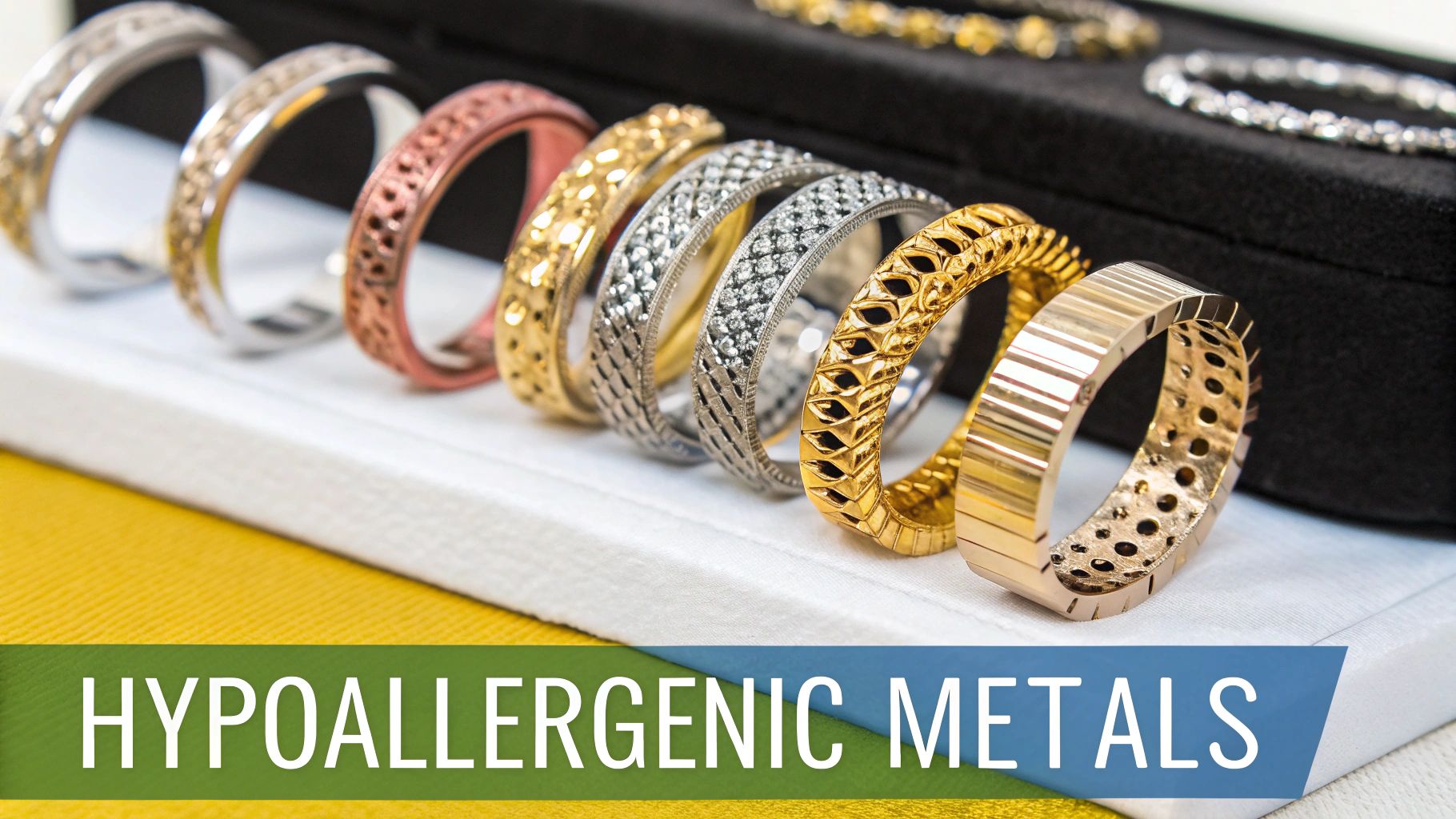
Navigating the world of jewelry metals can feel like a minefield when a wrong choice leads to itchy, red skin. Fortunately, finding beautiful, skin-friendly options is much easier once you know what to look for.
Think of certain metals as "safe havens" for sensitive skin. They're biocompatible, which is just a technical way of saying your body is highly unlikely to have a bad reaction to them. Let's walk through the top choices so you can confidently pick pieces that are safe, stylish, and perfect for your life.
The Most Reliable Hypoallergenic Metals
When you're shopping for jewelry for sensitive skin, some materials consistently prove themselves to be the best of the best. Surgical-grade stainless steel is a fantastic place to start. It offers a brilliant shine, it's tough against scratches and tarnish, and it’s wonderfully affordable. It’s a crowd-pleaser for a reason.
Titanium is another champion in the hypoallergenic world. It’s so lightweight you’ll barely feel it, yet it's exceptionally strong. Given that it's often used for medical implants, you can be absolutely confident in its biocompatibility. In the same vein, niobium is a pure element that's highly resistant to corrosion, making it an excellent choice for those with extreme sensitivities.
And then there's platinum, which sits at the premium end of the spectrum. This dense, luxurious metal is naturally hypoallergenic and keeps its silvery-white luster forever with minimal care. It’s a significant investment, but it's an unparalleled choice for lifelong pieces like wedding bands.
This trend toward skin-friendly materials is growing. World Bank consumer surveys show that 42% of jewelry buyers under 35 prefer hypoallergenic metals. Stainless steel, being 30–60% more affordable than precious metals, has become a top choice for this demographic. Discover more insights on the rising popularity of stainless steel jewelry.
Navigating Gold And Silver Options
Lovers of gold and silver don't have to miss out, but a little selectivity goes a long way. With gold, the key is the karat. Pure gold (24K) is too soft for jewelry on its own, so it’s mixed with other metals to create stronger alloys. To play it safe, always choose 14K gold or higher. This ensures a higher percentage of pure gold and a much lower risk of coming into contact with common irritants like nickel.
For silver, look for pieces stamped with "925" or "sterling silver." Just be aware that traditional sterling silver can sometimes contain small amounts of nickel. Your safest bet is to seek out pieces explicitly labeled as nickel-free sterling silver.
- Platinum: The most premium and inert option, ideal for investment pieces.
- Titanium & Niobium: Extremely biocompatible and lightweight, perfect for those with severe allergies.
- Surgical Stainless Steel: Durable, affordable, and widely available for everyday wear.
- 14K Gold (or higher): A safe and classic choice, but always verify the karat.
- Nickel-Free Sterling Silver: Provides the classic silver look without the common irritant.
Comparing Top Hypoallergenic Metals
To make your decision even easier, let's put these metals head-to-head. This table breaks down the key factors to consider when choosing the right material for your sensitive skin and your budget.
| Metal Type | Hypoallergenic Rating | Affordability | Durability | Best For |
|---|---|---|---|---|
| Surgical Stainless Steel | High | Excellent | High | Everyday wear, modern styles, budget-friendly |
| Titanium | Excellent | Good | Excellent | Severe allergies, lightweight comfort, active wear |
| Platinum | Excellent | Premium | Excellent | Wedding bands, luxury pieces, lifelong wear |
| 14K+ Gold | Good | Mid-to-High | Medium | Classic and traditional styles, special occasions |
| Nickel-Free Sterling Silver | Good | Good | Medium | Classic silver look, casual and dressy pieces |
By understanding these differences, you can confidently build a beautiful jewelry collection that brings you nothing but joy. For a deeper dive into material specifics, check out our guide on choosing the best metal for your jewelry.
How We Put Your Skin First at Precious Pulse Jewelry
When you have sensitive skin, finding jewelry that doesn’t betray you is a huge relief. At Precious Pulse Jewelry, our entire mission is built around that feeling of trust. We don’t just create beautiful accessories; we craft stylish, worry-free pieces you can wear with total confidence, knowing your skin's health is our top priority from start to finish.
We're firm believers that you should never have to compromise. Choosing between a design you love and something that won't cause a reaction is a choice you shouldn't have to make. That’s why our collections are centered around the most trusted hypoallergenic metals in the industry, making sure every single piece meets our tough standards for both quality and safety.
Our Promise Starts with Safe Materials
The story behind every one of our pieces begins with a very intentional decision: we only use high-quality, nickel-free metals known for being incredibly kind to skin. This isn't just a selling point for us; it’s the core of our promise to you. By focusing on materials like 316L surgical stainless steel and titanium, we cut out the number one cause of skin irritation before a design even takes shape.
These aren't just any metals. They’re the same grade used for medical implants, specifically chosen because they’re inert. In simple terms, they are extremely unlikely to cause a reaction, even when they’re sitting against your skin all day long.
For us, 'hypoallergenic' isn't just a buzzword we stick on a label. It's our guarantee that every necklace, earring, and bracelet was made to be as gentle as it is beautiful. It’s our way of offering a real solution for anyone who’s ever had to give up on wearing jewelry they love because of a bad reaction.
This thoughtful material selection means you can finally enjoy your jewelry 24/7. Our pieces are designed to be your dependable go-tos, whether you're heading into a meeting, hitting the gym, or dressing up for a night out.
Collections Crafted for Everyday Confidence
You can see our commitment to skin-safe jewelry in every collection we offer. Our Elegance Essentials line, for instance, is filled with delicate necklaces and studs made from pure 316L stainless steel. They're perfect for adding that little touch of class to your daily look without even a hint of irritation. Their smooth, non-porous surface also helps resist the buildup of bacteria and other irritants, making them perfect for wearing day in and day out.
Likewise, our Titanium Aura rings and bracelets are unbelievably lightweight yet tough as nails, offering a comfortable and secure fit for even the most active lifestyles. Every piece isn't just designed to look incredible; it’s designed to feel like it’s barely there, so you can show off your style without the nagging distraction of discomfort. Because at Precious Pulse Jewelry, your well-being truly is the ultimate luxury.
How to Wear and Care for Your Jewelry
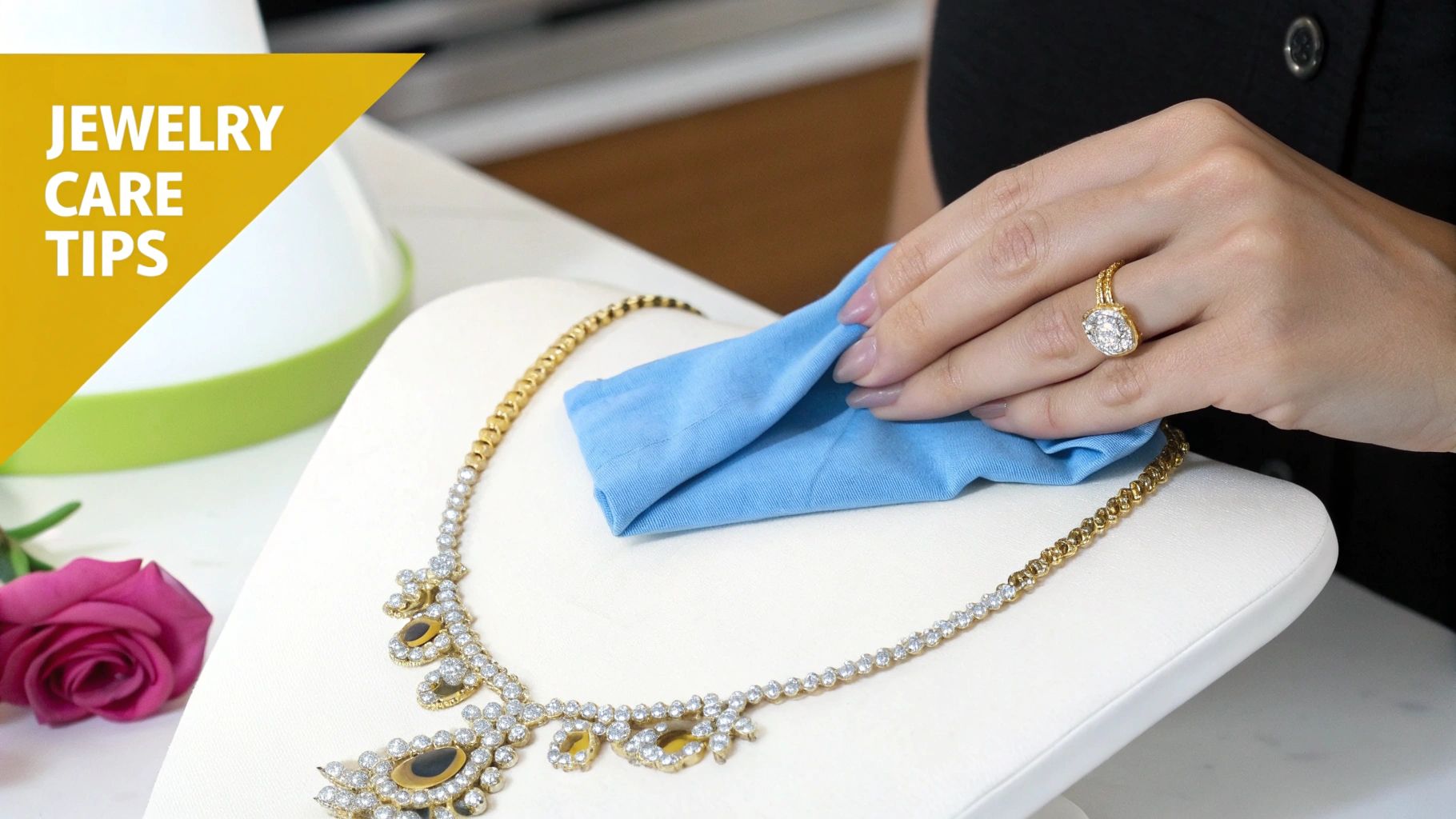
Choosing the right hypoallergenic metal is the first big win in building your collection of jewelry for sensitive skin. But the story doesn't end there. Proper care and a few smart daily habits are just as crucial for keeping your skin and your accessories in perfect harmony.
Even the safest metals can gather everyday irritants like sweat, lotion, and dust. A little bit of thoughtful maintenance goes a very long way.
Think of your jewelry as the final touch to your look—literally. To keep chemicals from tarnishing your pieces or irritating your skin, always put your jewelry on last. Apply your lotions, perfumes, and hairspray first, then give them a few minutes to set before you accessorize. This simple habit creates a protective buffer and keeps your jewelry looking brilliant.
Simple Steps for Cleaning and Maintenance
Regularly cleaning your hypoallergenic jewelry is non-negotiable for removing the buildup that could trigger a reaction. Don’t worry, it’s easy. A gentle approach is always best.
-
Prepare a Simple Solution: Grab a bowl of warm water and mix in a few drops of mild, fragrance-free dish soap. Steer clear of harsh chemicals or abrasive cleaners.
-
Soak and Scrub Gently: Let your jewelry soak for a few minutes to loosen any grime. Then, use a soft-bristled toothbrush to gently scrub away buildup from tiny crevices and clasps.
-
Rinse and Dry Thoroughly: Rinse the pieces under clean, running water. Finally, pat them completely dry with a soft, lint-free cloth. Any moisture left behind can lead to tarnishing or skin irritation.
For a deeper dive, especially for precious metals, you can explore our full guide on how to clean sterling silver jewelry to keep your favorite pieces sparkling.
Daily Habits for Happy Skin
Beyond cleaning, a few small adjustments to your routine can make a huge difference. These habits protect your skin and ensure the longevity of your favorite pieces from Precious Pulse Jewelry.
Your skin is most vulnerable during sleep and exercise, when sweat and friction are at their peak. Making it a rule to remove your jewelry beforehand is one of the most effective ways to prevent irritation and keep your pieces safe from damage.
Follow these best practices for truly worry-free wear:
- Remove Before Sleep: Always take off all your jewelry before bed. This prevents unnecessary friction and gives your skin a break from prolonged contact.
- Keep It Dry: Pop off your rings and bracelets before washing your hands, showering, or taking a dip in the pool.
- Store It Properly: Keep your pieces in a cool, dry place, like a fabric-lined jewelry box or individual soft pouches. This prevents scratching and minimizes exposure to air, which is the main culprit behind tarnishing.
Decoding Labels and Shopping with Confidence
Alright, you know the metals, you know your skin—now it's time for the final step: becoming a savvy shopper. This is where you learn to read between the lines on product descriptions, turning confusing labels into clear signals of quality.
Knowing what to look for empowers you to spot skin-friendly jewelry instantly and, more importantly, avoid the disappointment of another reaction. Think of it as developing a sixth sense for safe, beautiful pieces.
First, let's talk about that word you see everywhere: "hypoallergenic." It sounds official, but it's not a regulated term. It simply means a product is less likely to cause an allergic reaction. It’s a great starting point, but we need to dig deeper.
Know Your Labels
The most reliable labels are the ones that don't hide behind vague language. They name the exact materials, giving you the confidence that what you're buying is pure and safe.
- Nickel-Free: This is your holy grail. It’s a direct promise that the jewelry doesn’t contain the number one culprit behind most metal allergies.
- Surgical-Grade: This almost always refers to 316L stainless steel, a highly biocompatible material trusted for medical implants. Seeing this label is an excellent sign of quality and safety.
On the flip side, you need to learn to spot the red flags. Vague descriptions like "metal alloy" or "base metal" are often used when a seller doesn't want to admit their jewelry contains nickel. If they can’t tell you exactly what’s in it, walk away.
This push for transparency isn't just a niche concern; it's a massive market shift. Trend analytics show that searches for hypoallergenic earrings shot up by 27% year-over-year in 2025. This isn’t just a fad—it’s a clear demand for safer options, especially as online shopping grows. You can dive deeper into these evolving jewelry trends to see just how big the movement is.
Questions to Ask Any Retailer
When you're unsure, don't be afraid to ask direct questions. Whether you're in a boutique or messaging an online store, a little inquiry goes a long way.
A trustworthy seller will always be transparent about their materials. If they are evasive or unsure about the metal composition, consider it a major red flag and take your business elsewhere.
Keep these questions in your back pocket to shop with confidence:
- Is this piece certified nickel-free?
- What specific grade of stainless steel or titanium is this?
- For gold items, can you confirm the karat and what other metals are in the alloy?
Arming yourself with this knowledge changes everything. You're no longer just a hopeful buyer; you're an informed expert building a collection that’s both beautiful and completely safe for your skin, just like the pieces we craft at Precious Pulse Jewelry.
Still Have Questions About Hypoallergenic Jewelry?
Choosing jewelry for sensitive skin can feel like navigating a minefield. You see words like "hypoallergenic" and "nickel-free" thrown around, but what do they really mean? Getting clear, straightforward answers is the key to building a collection you can wear with confidence. Let's tackle some of the most common questions people have.
Can I still wear gold or silver?
Absolutely! The key is purity and composition. Pure gold (24k) and pure silver are too soft for durable jewelry, so they're mixed with other metals (alloyed) for strength. The problem arises when nickel is used in the alloy. To stay safe:
- For Gold: Choose 14k gold or higher. This ensures a high percentage of pure gold and a minimal chance of nickel content.
- For Silver: Look for pieces stamped "925" or "sterling silver" that are explicitly labeled nickel-free.
What does "hypoallergenic" actually mean?
This is a common point of confusion. The term "hypoallergenic" isn't officially regulated. It simply means a product is less likely to cause an allergic reaction. It's a helpful starting point, but it's not a guarantee.
Because the term 'hypoallergenic' is more of a marketing guide than a scientific standard, it's crucial to look beyond the label. Focus on the actual materials used, such as titanium, niobium, or 316L surgical stainless steel, which have proven biocompatibility.
Your knowledge of safe materials is a more powerful tool than any single label.
How can I test my existing jewelry for nickel?
If you suspect a piece you already own is causing irritation, you don't have to guess. The most practical way to check is with a nickel spot test kit, available online or from a dermatologist. It's a simple process: you apply a few drops of a special solution to the metal. If the solution changes color (usually to pink), it confirms that nickel is present, and you'll know to avoid wearing that piece directly against your skin.
At Precious Pulse Jewelry, we take the guesswork out of the equation. Our entire collection is crafted from high-quality, skin-safe materials, so you can shop with the confidence that every piece is designed with your comfort in mind. Explore our beautiful, worry-free jewelry today at https://preciouspulsejewelry.com.


